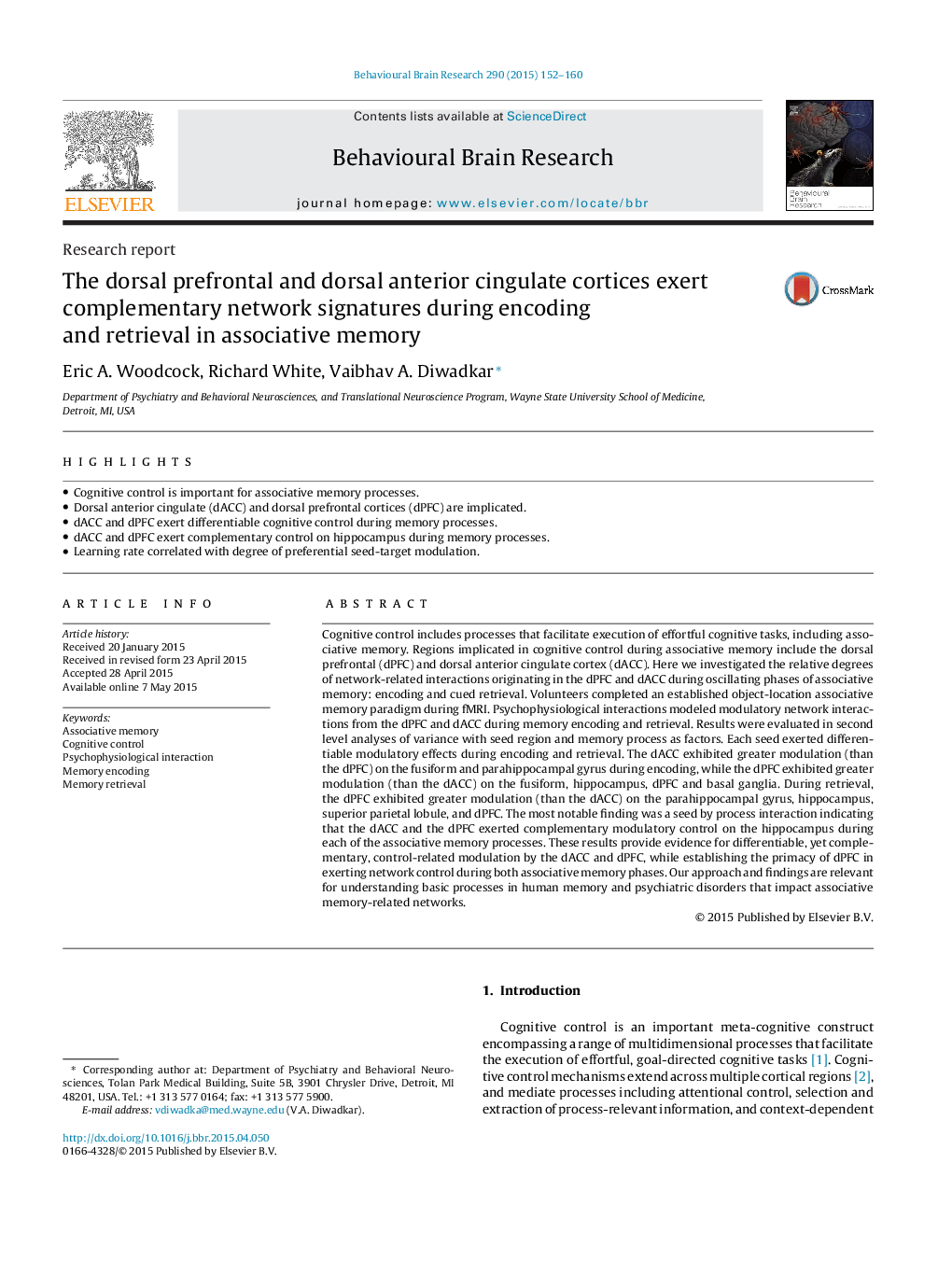| Article ID | Journal | Published Year | Pages | File Type |
|---|---|---|---|---|
| 6256679 | Behavioural Brain Research | 2015 | 9 Pages |
â¢Cognitive control is important for associative memory processes.â¢Dorsal anterior cingulate (dACC) and dorsal prefrontal cortices (dPFC) are implicated.â¢dACC and dPFC exert differentiable cognitive control during memory processes.â¢dACC and dPFC exert complementary control on hippocampus during memory processes.â¢Learning rate correlated with degree of preferential seed-target modulation.
Cognitive control includes processes that facilitate execution of effortful cognitive tasks, including associative memory. Regions implicated in cognitive control during associative memory include the dorsal prefrontal (dPFC) and dorsal anterior cingulate cortex (dACC). Here we investigated the relative degrees of network-related interactions originating in the dPFC and dACC during oscillating phases of associative memory: encoding and cued retrieval. Volunteers completed an established object-location associative memory paradigm during fMRI. Psychophysiological interactions modeled modulatory network interactions from the dPFC and dACC during memory encoding and retrieval. Results were evaluated in second level analyses of variance with seed region and memory process as factors. Each seed exerted differentiable modulatory effects during encoding and retrieval. The dACC exhibited greater modulation (than the dPFC) on the fusiform and parahippocampal gyrus during encoding, while the dPFC exhibited greater modulation (than the dACC) on the fusiform, hippocampus, dPFC and basal ganglia. During retrieval, the dPFC exhibited greater modulation (than the dACC) on the parahippocampal gyrus, hippocampus, superior parietal lobule, and dPFC. The most notable finding was a seed by process interaction indicating that the dACC and the dPFC exerted complementary modulatory control on the hippocampus during each of the associative memory processes. These results provide evidence for differentiable, yet complementary, control-related modulation by the dACC and dPFC, while establishing the primacy of dPFC in exerting network control during both associative memory phases. Our approach and findings are relevant for understanding basic processes in human memory and psychiatric disorders that impact associative memory-related networks.
